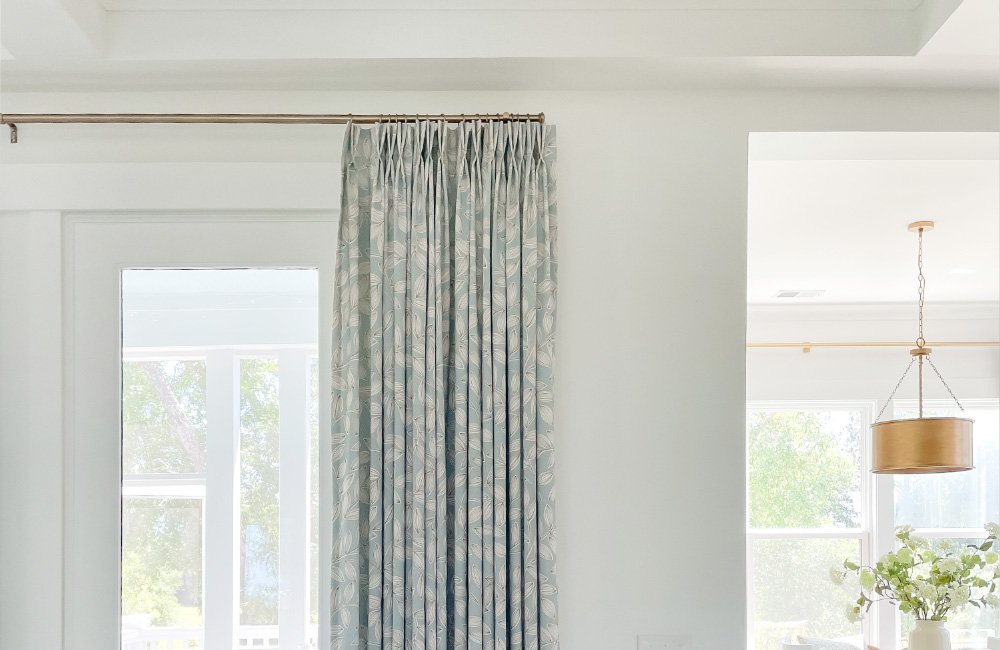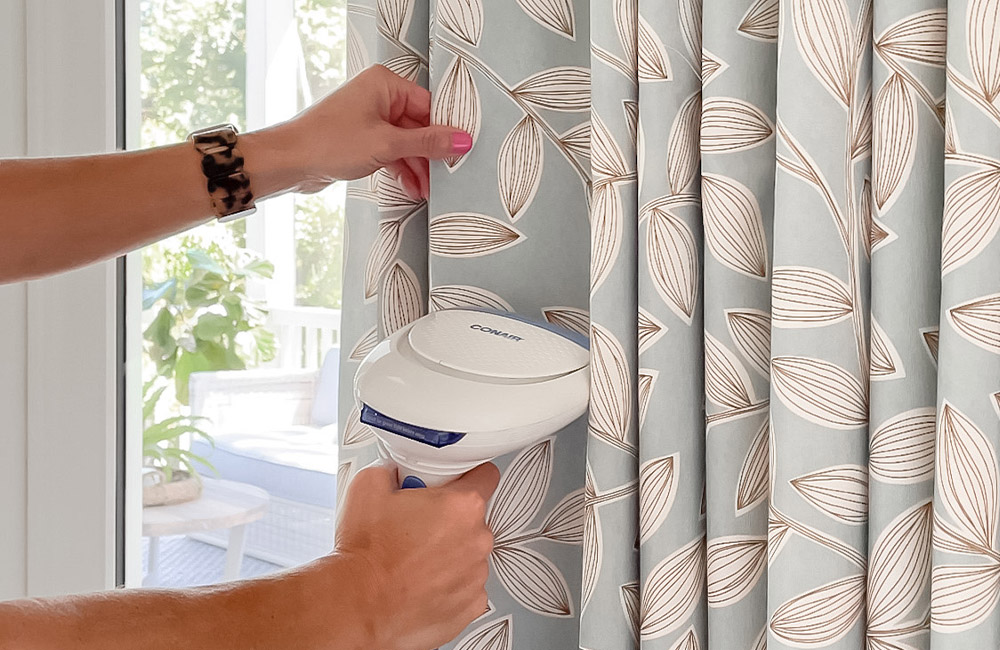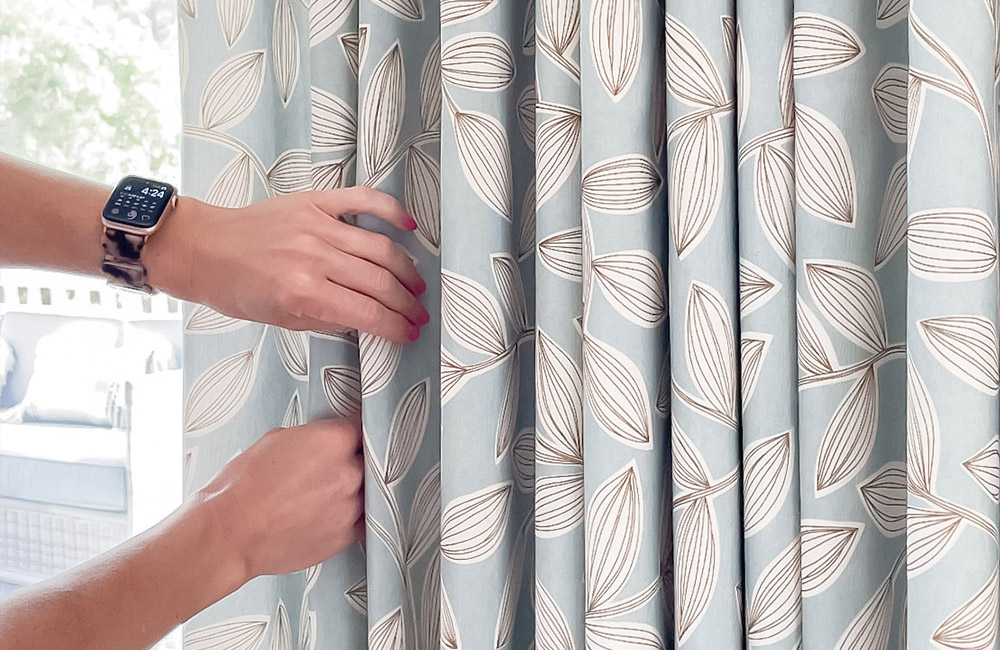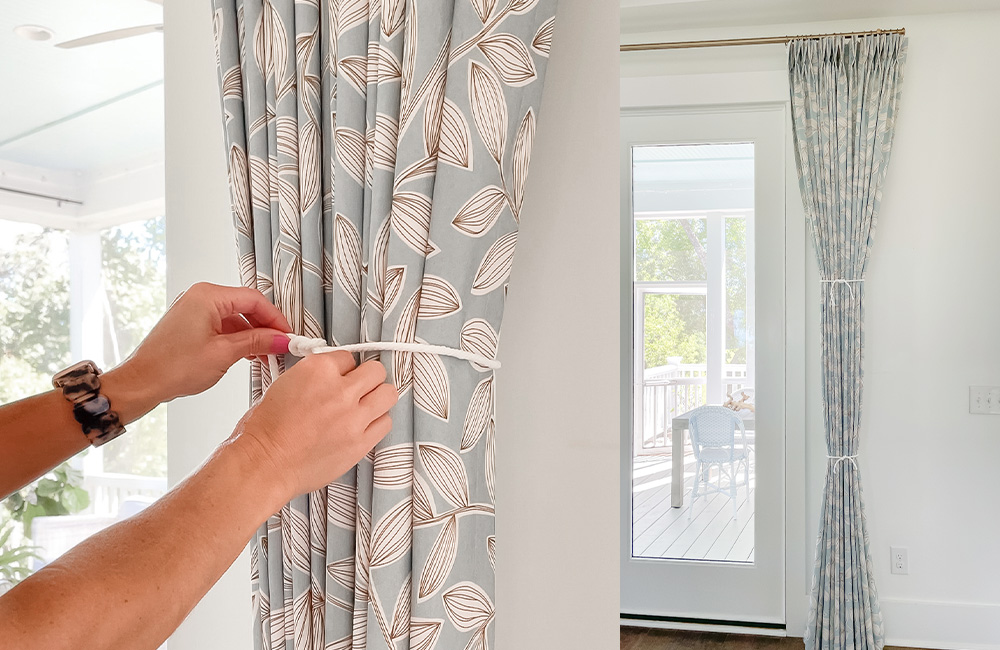
"How to train your curtains" may not be the first thing you think to search for when trying to upgrade the look of a room. However, this simple task can bring a designer look to your space and is often the secret to why professionally designed rooms in magazines and model houses look so rich and elegant.
The great news is it doesn't take much effort to get a gorgeous fold to your pleated curtains. In fact, in just a matter of a few minutes, you'll be well on your way to enjoy the elevated look that only trained curtains can provide. Read on to learn how to train curtains with little effort or hassle.
What is Curtain Training?

Curtain training might sound like a unique task but it's really quite simple. In fact, learning how to train curtains doesn't require much skill or effort.
Curtain training is the process of creating nice folds and pleats and securing the curtain fabric in a way to allow the curtain to hold this shape for many months.
Although some people like to experiment with different ways of hanging curtains, such as using tiebacks, simple straight hanging curtains give a clean, modern feel when the folds are neat and uniform.
How to Train Your Curtains in 3 Simple Steps
Training curtains involves folding the curtain properly so the fabric remains in this fixed state. Just like you create a crease in your dress pants, shaping your curtains fabric is done to create crisp, uniform folds.
Ready to learn how to train curtains? You'll be amazed at how easy and straight-forward this process is! It doesn't require any special skills or talents and even if this is your first time training curtains, you can feel confident that these steps are all it takes.
1. Steam Curtains

You'll want to begin the process with wrinkle-free curtains. The good news is that, unlike with clothing, after you do this once, there aren't many elements that will cause your curtains to wrinkle.
The hand-held steamer will be your essential tool for removing wrinkles as well as setting each curtain fold. After removing any wrinkles, apply continuous steam to each fold starting at the bottom and moving the steamer up to the top of each pleat.
By focusing on the bottom of the curtains first, you can control how the curtains fall and where each fold will be. After steaming in a few folds, gather them together and steam to further set the fold in place.
2. Arrange Folds

Arrange folds from the top of your curtain rod. Be careful with this step because you'll most likely need to get onto a ladder. Evenly space out your curtain pleats with a uniform distance between each.
If you are using eyelet curtains, you'll want to make certain that each fold provides enough fabric for a tightly formed U-shape to occur without much space between folds.

For pleated curtains, allow approximated a half inch between pleats at the top of the rod.

Be sure to tuck all of the extra fabric between the pinch pleats. Gather the pleats at the top of the curtain and continue down to the floor for a polished look. You can then do another round of steaming to fully set your folds in place.
3. Tie Your Curtains in Place

Finally, loosely tie each curtain to hold in the folds. This step is pretty similar to setting hair into curls by using hair rollers. Use ribbon, raffia or kitchen string for this task.
To enjoy the look and function of your curtains while they're still "in training," tie them closed at night but open them each morning. Your goal here is to set the fabric so it will want to naturally remain in this position.
For especially long curtains, use several ties evenly spaced up and down the length of the curtains. Hold your curtains in place like this for several days before removing the ties.
There you have it! That's simply all it takes to train your curtains and get that designer look. You can expect your curtains to retain their fold for at least several months. However, you'll want to repeat this process after each time you launder your curtains.
How Can Pleated Curtains Elevate a Space?
Curtains are often one of the most visible elements in any room, so how they are displayed significantly impacts the overall feel of the space. Properly folded curtains can make a room feel more inviting and comfortable.
On the other hand, poorly hung or wrinkled curtains can detract from the overall look and feel of any room. Paying attention to the details of how your curtains are displayed can help create a more cohesive and visually appealing room design.
Final Thoughts
Neatly folded curtains instantly give any room a great first impression. They not only add a sense of order and organization to the space, but, when curtains are properly folded, they create clean lines and a polished look.
Properly trained curtains enhance a room's decor in several ways. Neatly folded curtains give the impression of a clean and organized room. When curtains are haphazardly thrown to the side or crumpled on the floor, it can give the impression of a cluttered and messy space.
With curtain training being such a simple process that makes a big impression, it's easy to see why this should be an essential step for a designer look in every room of your home.













